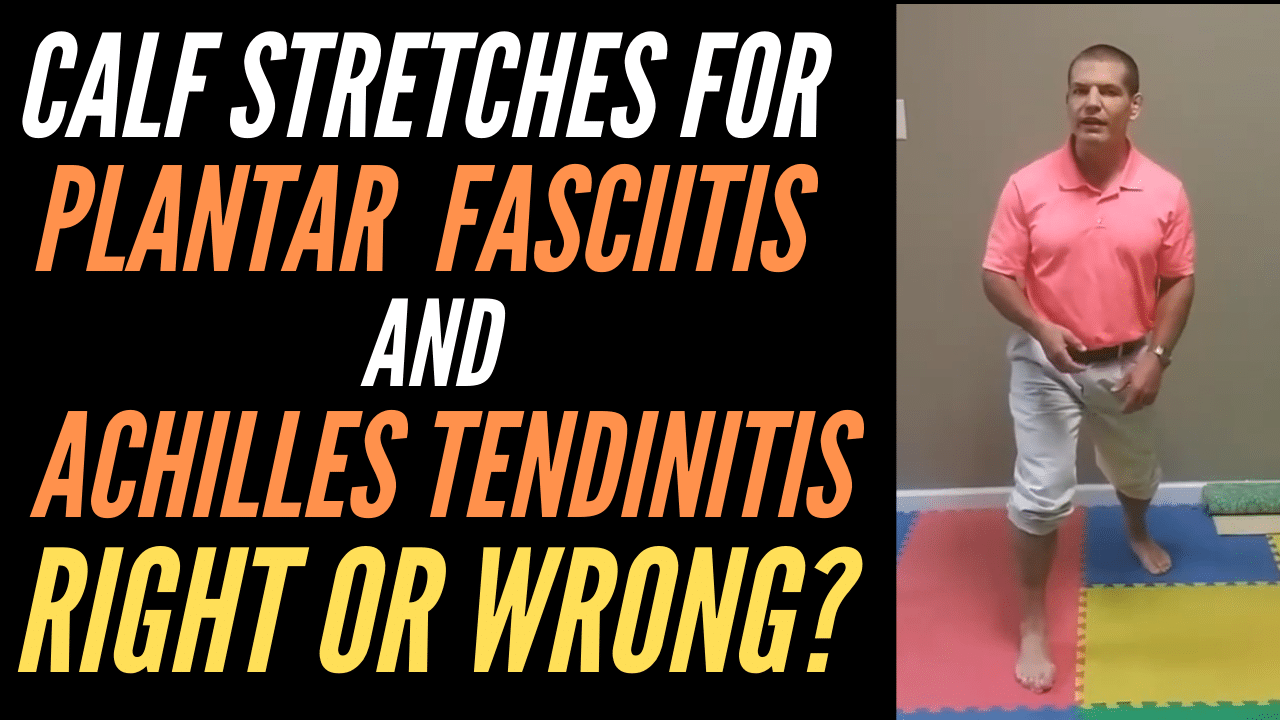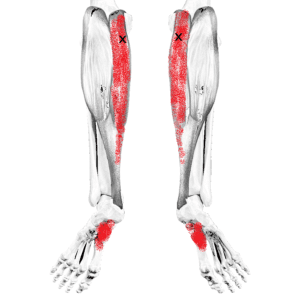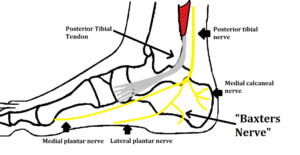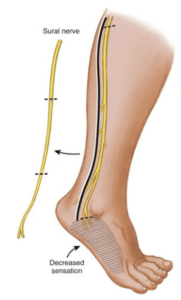Are You Doing Calf Stretches for Plantar Fasciitis or Achilles Tendonitis and Still Having Pain?
You may be doing them WRONG!
May people do calf stretches for plantar fasciitis and Achilles tendonitis incorrectly. Watch the video below to learn how to do them right.
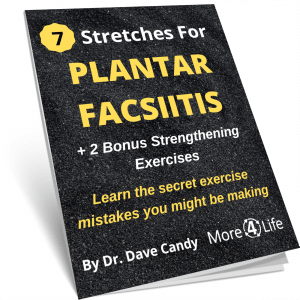
Why Should I Do Calf Stretches For Plantar Fasciitis?
There are several good reasons to do calf stretches for plantar fasciitis.
- Your calf muscles can cause foot arch pain that's not plantar fasciitis
- Your calves affect your walking pattern and can cause you it irritate your plantar fascia and other structures in your foot.
Calf Muscle Trigger Points Can Be Mistaken For Plantar Fasciitis
Trigger points are stiff, sore "knots" in your muscles.
They're basically area's where your muscles are contracted and they can't let go.
Trigger points are by definition very tender to the touch, and they can cause pain at the site of the trigger point as well as refer pain to other areas.
Some of the trigger points in your calf muscles can actually refer pain into the arch of the foot that can be mistaken for plantar fasciitis.
Doing calf stretches can help foot pain caused by trigger points, but the way many people stretch their calves doesn't stretch this particular part of the muscle.
Other treatments that can help "plantar fasciitis" symptoms caused by trigger points in the calf muscles include manual trigger point therapy and dry needling, both of which we offer at More 4 Life.
Stiff Calf Muscles Affect The Way You Walk
If you're like many people with plantar fasciitis, chances are you may overpronate when walking.
"Pronation" refers to the motion of your foot flattening as you load weight on it.
Pronation is normal and good. Pronation helps the foot absorb shock as it hits the ground.
This prevents the force of your foot hitting the ground when walking or running from getting transmitted up through the rest of your body, which can cause knee, hip, or back pain.
However, if you pronate TOO much, the tissues in your foot get overstretched. This may include the plantar fascia as well as the muscles, tendons, and nerves that are located under the arch of your foot.
Pronation is good... Over-pronation is bad
What does this have to do with calf stretches?
Many people overpronate their feet because their calves aren't flexible enough to allow their body to move forward in front of their feet when walking or running.
By overpronating, you can compensate for having stiff calf muscles.
The goal of doing calf stretches for plantar fasciitis is to get the calf muscles to be MORE flexible.
Why MOST People Do Calf Stretches For Plantar Fasciitis and Achilles Tendonitis Wrong
Many people with stiff calves who overpronate when walking or running also tend overpronate while doing calf stretches.
If you overpronate while stretching, your calf stretches aren't going to help your plantar fasciitis.
You may "feel the burn" like you're stretching your calves, but you're not stretching the part of the calf muscle that you need to.
Furthermore, if you "feel the burn" while stretching your calves, what you actually may feel is the tibial nerve that runs down the back of your leg, or the sural nerve that lies along the Achilles tendon.
Nerves are NOT made to stretch.
In fact, a sural nerve problems can often be misdiagnosed as Achilles tendoninitis.
Furthermore, your Achilles tendon is very strong in an up/down and forward/backward plane of movement.
However if you overpronate your feet when walking or running, this causes twisting or shearing forces across the tendon. These twisting or shearing motions can put your Achilles tendon at risk for injury.
Take home point...
Don't allow your feet to pronate when stretching your calves.
How To Do Calf Stretches For Plantar Fasciitis And Achilles Tendonitis Correctly
For the best explanation, make sure to watch the video at the top of this page. However, a summary of the main points is listed below.
How To Do Calf Stretches Correctly
-
- Start out with your hands on the wall and one foot back.
- Make sure your feet are pointed straight ahead and pointed towards the wall.
- Lift the arch on your foot and crunch your toes.
- Lean forward slightly to stretch (You won't have to go far if you are doing it correctly.)
- Keep leaning forward until you feel like you can't go any further.
- Hold that position for about 1 minute.
- Switch feet and repeat.
Need More Help For Plantar Fasciitis or Achilles Tendonitis?
Choose from one of the options below to get help from a Specialist
Like this post? Read some of our other posts about foot & ankle pain
How To Relieve Foot Pain In The Morning
When Is Foot Arch Pain Not Plantar Fasciitis?
5 Foot Stretches For Plantar Fasciitis
Could You Be Doing Calf Raises Wrong?

